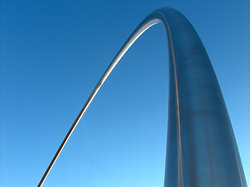On
March 10, 2016 the American Chamber of Commerce in Germany e.V.
("AmCham Germany"), BridgehouseLaw LLP and Rueckel&Collegen hosted
the 7th Annual AmCham Germany Business Day at Emory University in Atlanta, Georgia, USA, recognizing
24 students of 7 U.S.-Universities who participated in the U.S.-German
Internship Program to intern with a company in Germany for three months.
The
main goal of the event titled "Family-Business and Entrepreneurship:
Drivers of Growth and Innovation in Germany and in the U.S." was to bring
together international thought leaders form industry, academia and
public policy, and to discuss both advantages and challenges of
family-businesses and Mittelstand firms in the global race for
innovation and technology growth.
The event started-off with a visit of the Headquarters of Chick-Fil-A,
a highly-successful American restaurant chain based in Atlanta.
Chick-Fil-A was founded in 1946 and has more than 1,850 restaurants
today, mainly in the southeastern U.S. Mr. Stephen Franklin (Advisor)
and Mr. Bubba Cathy (Senior Vice President) spoke about the policies and strategies that have made the company so successful. Later on Chick-Fil-A's infamous chicken-sandwiches were served for lunch to the participants of this site visit.
The introductory speeches of the afternoon session held at the Goizueta Business School at Emory University,
were given by Dr. Christoph Rueckel (AmCham Germany Southeast USA;
BridgehouseLaw LLP; and Rueckel&Collegen), Mr. Thomas Wuelfing
(Deputy Consul General, Consulate General of the Federal Republic of
Germany to the Southeastern U.S.) and Mr. Andreas Povel (General
Manager, AmCham Germany). Prof. Dr. Hermut Kormann
(Zeppelin-University) and Bill Moeller (Office of the U.S. Trade
Representative at The White House) were the keynote speakers of this
year's conference.Their presentations were followed by a two-hour panel discussion
moderated by Prof. Dr. Torsten M. Pieper (Kennesaw State University),
an academic expert on family-business. Eight panelists representing
industry and academia discussed their experiences and approaches
to cope with the challenges for American and German family-businesses
and mid-sized firms in an international economy with opportunities and
risks for sustainable growth and innovation.
This year's panelists were:
- Stefan Euchner (EUCHNER GmbH + Co. KG)
- Dr. John D. Gatto (NRW.INVEST (North America), LLC)
- Peter Hoecklin (TRUMPF Inc.)
- Martin Richenhagen (AGCO Corp.)
- Michaela Schobert (German American Chamber of Commerce of the Southern U.S. Inc., (GACC South)
- Arndt Siepmann (Stuttgart Regional Economic Development Corp.)
- Lee C. Weingart (LNE Group)
- Ulrich Zeltwanger (ZELTWANGER Holding GmbH).
The
Dinner Reception included speeches held by Mr. Linhard Stepf
(FrankfurtRheinMain Corp.) and Ms. Sabrina Fritz (SWR and ARD in
Washington, DC) on the importance of family-business and the value of
families in today's world.
The evening program ended with an introduction of the U.S.-German Internship Program (for more information, go to: http://www.amchaminternship.org/)
by Ms. Monika Schulte (Chair Advisory Counsel; AmCham Internship
Program; and Piedmont College) and the speeches of students from
different universities who participated in the program. They talked
about their professional experiences they gained during their internship with a German company and their cultural observations they gathered living abroad for 3 months. Some of the alumni took part in the internship several years ago and are now successful in the professional word.
Over
120 people attended the Business Day: both students and faculty members
from the participating universities of the internship program and
representatives of over 40 different companies participated this year.
The
7th Annual AmCham Germany Business Day turned out to be a very
successful event, due to the generous help and support by various
companies, schools and other institutions. Many thanks to this year's
silver sponsor AGCO Corp. and to other supporters, such as NRW.INVEST
(NORTH AMERICA) LLC; Inc.; FrankfurtRheinMain Corp.; State of Indiana
(European Office); Habif, Arogeti & Wynne, LLP; LNE Group; CEPA
Foundation; The Coca Cola Company; Paolo's Gelato Italiano; as well as
the Goizueta Business School at Emory University, Piedmont College,
Morehouse College and Washington and Lee University.
by: Vivien Cservenka (BridghouseLaw Atlanta)

